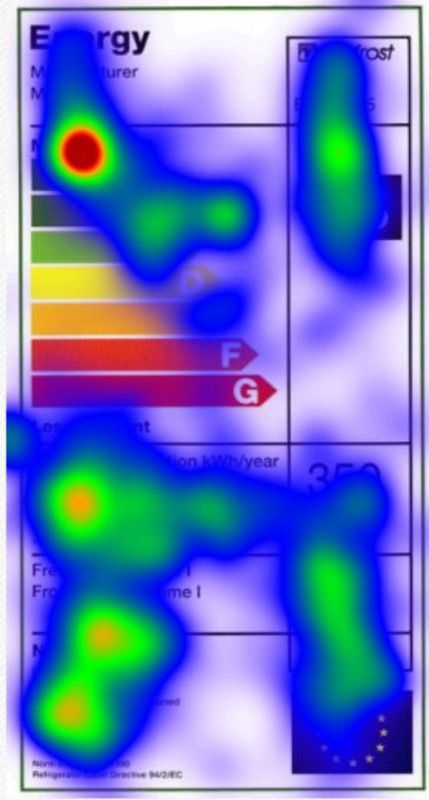Researchers use new eye-tracking technology to ask what drives human choice
Posted on: 21 February 2017
Engineers from Trinity College Dublin are using infra-red beams to track pupil movement in a bid to better understand what drives human choice when we are presented with a weight of information.
The research team is currently assessing which bits of information attract the most attention when people study energy labels designed to promote sustainable choices, as well as pondering how people interact with questions and what they absorb when viewing road safety scenarios and information. The project was funded under the Environmental Protection Agency’s 2014-2020 Research Programme.
This new eye-tracking technology involves an infra-red beam positioned below a computer screen, which, along with special software, is used to record how much time is spent viewing certain information on a screen, and confirm in what order the information is viewed. This results in graphical representations in the form of ‘heat maps’ and ‘scan paths’ respectively.

Associate Professor in Civil Engineering at Trinity, Brian Caulfield, is leading the work. He said: “A huge number of factors can – and do – influence decision-making, so it is really important that we better understand what motivates people, and why. The first step is to understand how people interact with information and handle the different questions and options they are presented with – these new eye-tracking approaches are invaluable in that regard.”
”The main findings of the work show that people do consider eco-labels, however they spend less time reviewing information that they are less familiar with. Overall the results show how complex the process of absorbing new information can be.”
As well as looking into energy labels and the information on them that attracts attention, Professor Caulfield and his team are also considering what people absorb when presented with information about road safety.
Postdoctoral Researcher at Trinity, Dr William Brazil, said: “This technology essentially lets us see what other people are seeing, which is really useful when trying to understand their subsequent actions. For example, if our tests show that consumers are not looking at information about energy impacts or environmental issues, we can assume that they are not considering them in their choices, and that the way we provide information may need to be redesigned.”
“Our work opens the door to a myriad of possibilities from a research perspective. There is no reason why we can’t use this eye-tracking technology to better understand human behaviour in areas ranging from road safety and hazard identification, website and marketing design, through to new approaches in education and learning.”
